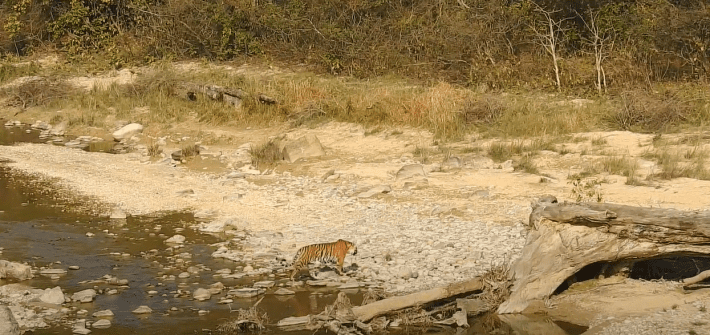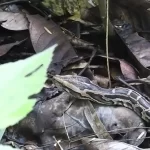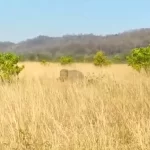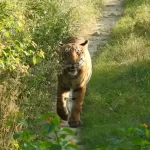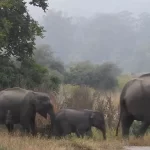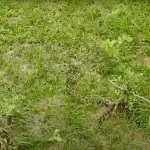Tigers are opportunistic feeders and at an average, a tiger kills an animal a week. Depending upon its size, the kill may last a single meal, if it’s a small animal like an average Rhesus Macaque, or it may last 3-4 days, if the animal killed is as large as a full grown Sambar Deer. […]
Author: Jim's Jungle Retreat
A Burmese Python at Jim’s Jungle Retreat
The Burmese Python is among the largest snakes in the world with individuals growing to a length of 20ft in India and approaching 30ft in south-east Asia. A non-venomous snake, it is harmless to humans. Being a constrictor, it lies in ambush for its prey, often hidden in the leaf litter of the forest floor, […]
A tigress patrolling its territory
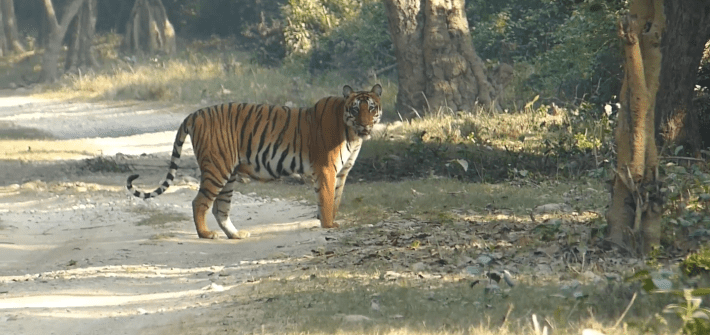
Tigers are solitary in nature and only when they are in courtship or when the mother is with the cubs, one can come across more than one tiger at the same place. Tigers are highly territorial and patrol their territory regularly to guard it from being taken over by the neighboring tigers.On a safari recently, […]
An Elephant remembers!
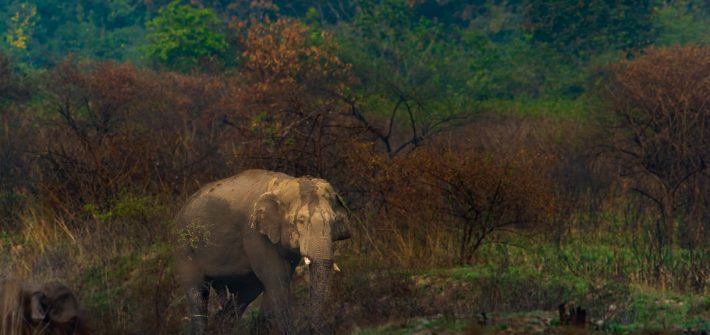
When he first arrived in this opening of the forest, as a young calf following her mother who was the matriarch of the herd, the smell of unripe wheat was too tempting. Though the sight of the twinkling lights of the distant fire was threatening, the faith he had in the members of the herd […]
An elephant visits a tiger’s waterhole
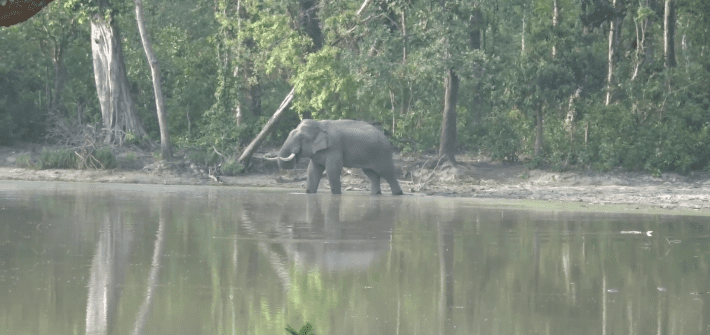
Water is key to life in the hot summer months. All kind of creatures visit water and tigers can be very possessive of their preferred waterholes. There have been instances when tigers have fought other tigers for the possession of these prime properties of the jungle. Though it is rare to see tigers engaging elephants […]
An omnivorous deer: Indian Muntjac
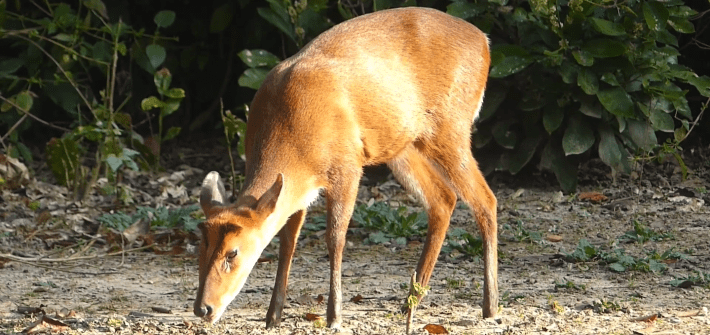
Contrary to popular belief, all deer species are not herbivorous. Indian Muntjac, popularly known as barking deer, feeds on grass, fruits, seeds, shoots, bird eggs, small animals and occasionally carrion. Males have enlarged canine teeth whereas females have shorter canines as compared to males. These are used as weapons by the males against rival males […]
Asian Koel at Jim’s Jungle Retreat
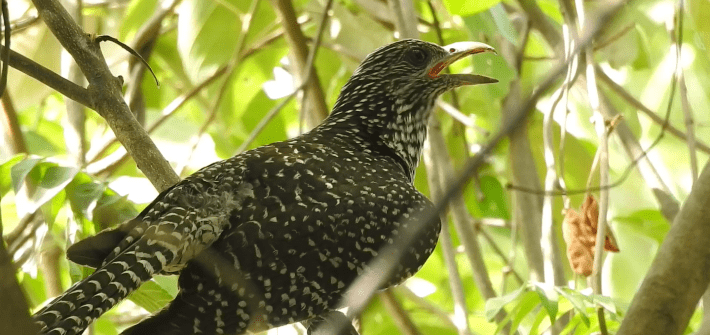
A majority of cuckoo species are brood parasites, i.e. they dispense with the chores of building their own nest and let their hosts do the painful job of raising their young ones. This behaviour is a marvel of evolutionary process, developed over millions of years. Asian Koel is a brood parasite on Indian Jungle Crow […]
Bluebull – The largest Asian antelope
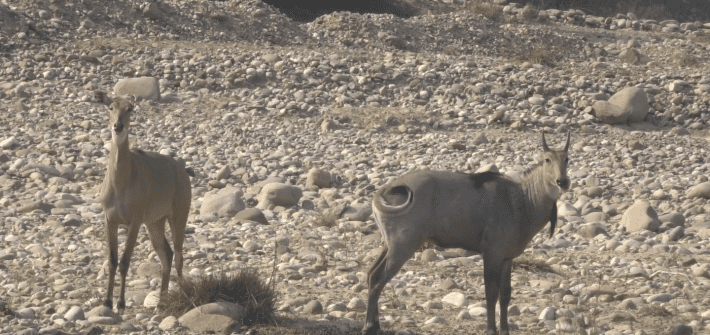
Bluebull, also known as Nilgai in Hindi is the largest antelope occurring in Asia. It is endemic to the Indian subcontinent, inhibiting parts of India, Pakistan and Nepal. It’s commonly distributed in the planes of north India and occurs along the southern boundary of the Corbett Tiger Reserve. Its preferred habitat is grassy plains, scrub […]
Branded Orange Owlet – Another rare butterfly shows up at Jim’s Jungle Retreat
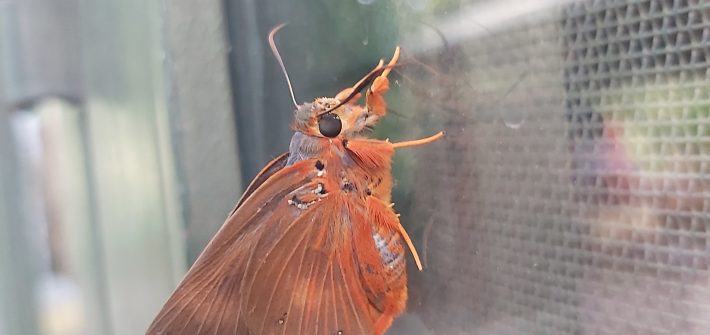
Branded Orange Owlet is a rarely seen butterfly in Corbett Tiger Reserve. It is known to occur in the Himalayas from Garhwal eastward to Northeast India and into Southeast Asia from Myanmar to Indonesia. It belongs to the Skipper family of butterflies, so called for their quick darting flight. This crepuscular butterfly is known to […]
Common Picture Wing at Jim’s Jungle Retreat
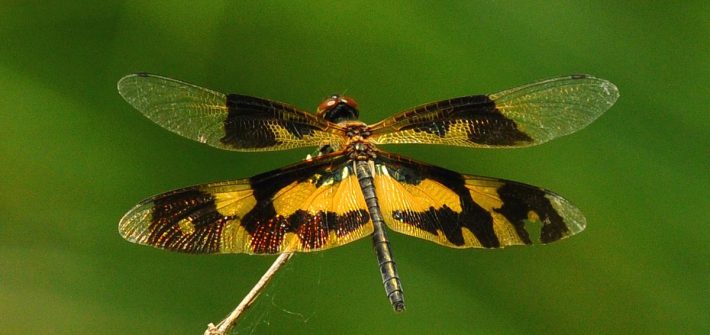
Common Picture Wing is a beautiful medium to large sized dragonfly, occurring in South Asia. The species is also called Variegated Flutterer, named after the orange and black markings on its wings and its fluttering flight. It is a weak flier and is often mistaken for a butterfly from a distance.This beautiful dragonfly is an […]
Indian Hare – an elusive mammal of Corbett Tiger Reserve
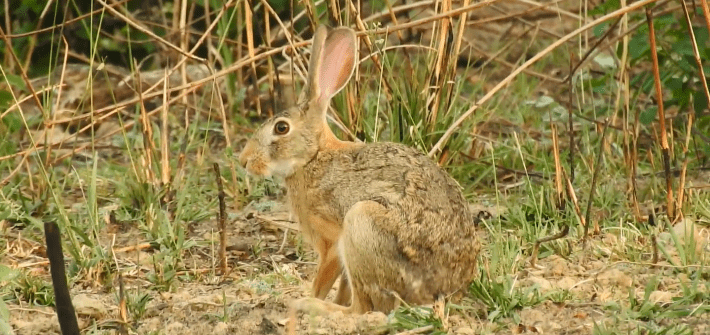
Indian Hare is one of the least encountered mammals of Corbett Tiger Reserve. By the time you start your morning safari, it has gone down in its burrow and while you are ending your evening safari, you’ll be extremely lucky to have come across one that ventures out of its daytime abode. Indian Hare is […]
Juvenile Scaly-breasted Munia flock feeding on grass seeds at Jim’s Jungle Retreat
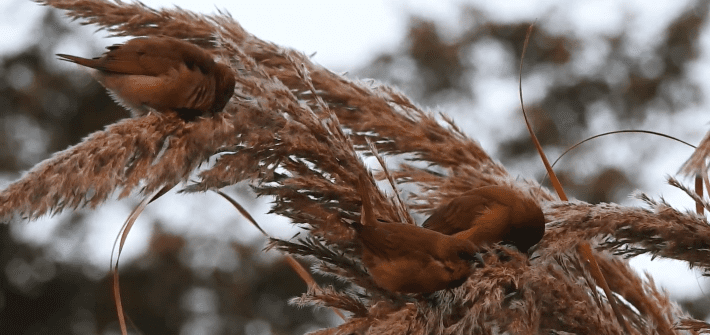
Seed-eating birds help with dispersal of seeds, resulting in propagation of flora. It would have been a painfully slow process for the plants to disperse otherwise. These birds, after eating seeds, fly away and some seeds, passing through their digestive tract of the bird, come out with their droppings at locations far away. If this […]
Leopard – a great cat at great risk
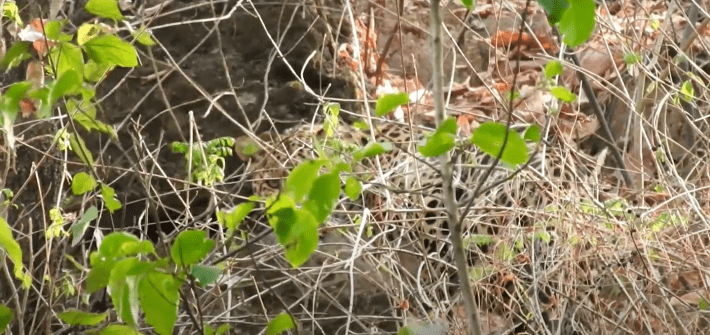
The leopard has been the most successful of the five large cats found across the world belonging to the genus ‘Panthera’. It is distributed in sub-Saharan Africa, parts of western and central Asia, south Asia and south-east Asia. At one point of time it was believed that there were twenty seven subspecies of the leopard […]
King Cobra – The largest venomous Snake in the world!
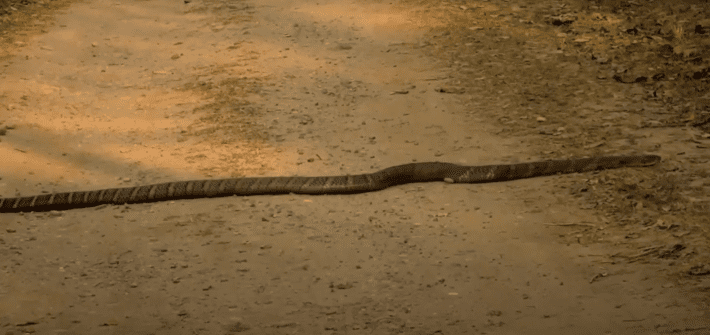
King Cobra is the largest venomous snake in the world with specimens recorded attaining a length of 17 feet or more. Its venom is not as potent as the venom of some of the smaller venomous snakes like cobras and kraits, but the sheer quantity that it can inject in a single bite is enough […]
Let’s protect our biodiversity as a legacy that we leave for our future generations!
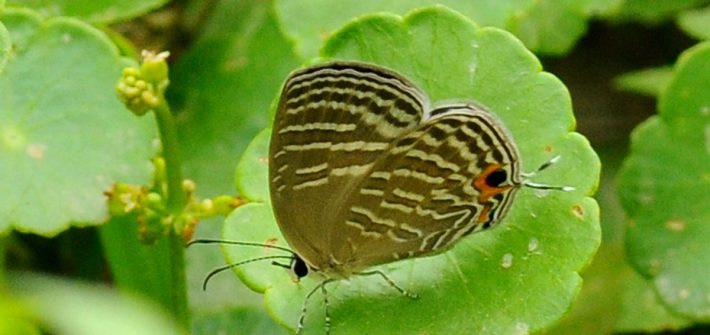
Biodiversity can be defined as the sum total of all life forms found in any given habitat or geographical area. These include animals, plants, fungi, bacteria and other microscopic organisms. All components of the biodiversity in any given area share intricate relationships with several others that they share their habitat with and together form a […]
The grasshopper story!
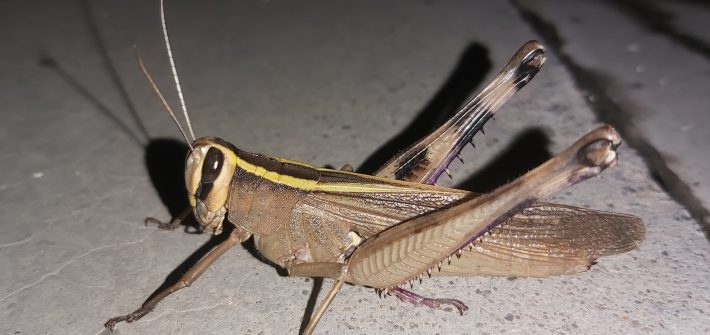
Grasshoppers are among the earliest herbivorous insects to use chewing as a mean of food intake. They are usually found in low vegetation or on the ground and possess long powerful hind limbs that are used for locomotion and escape from predators by jumping. They possess a pair of large compound eyes on the side […]
Rare Cantor’s Black-headed Snake
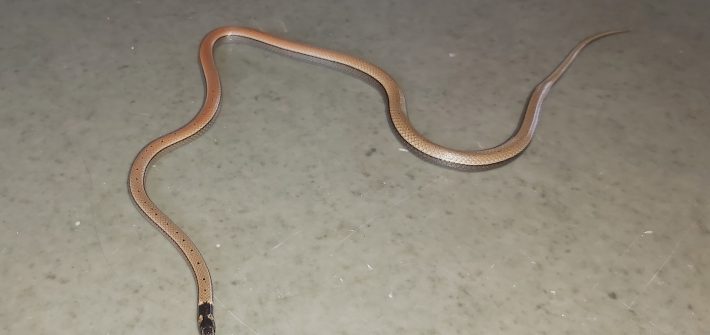
Canter’s Black-headed Snake is endemic to south Asia and occurs in India, Pakistan, Nepal, Bhutan and probably parts of Bangladesh. In India, this non-venomous snake is restricted to parts of north India. It is not a common snake to come across in Corbett Tiger Reserve. This may possibly be due to the fact that this […]
Tiger, Burning Bright – Wildlife Photography
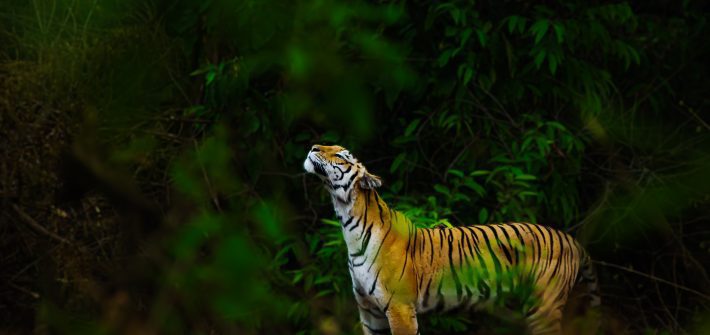
We all turn into wildlife photographers when we are on jungle safaris. Modern technology has so many amazing tools of photography, mobile phones, action cameras and digital cameras being some of these. However, it takes effort and special skills to produce wildlife photographs that stand out.Amith Bangre, the Head Naturalist of Jim’s Jungle Retreat takes […]
The dance of the Honeybee
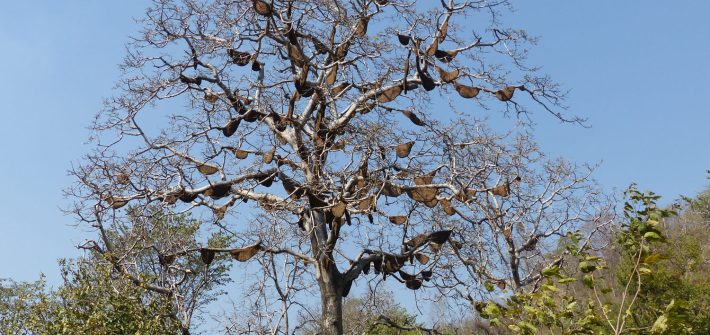
Honeybees have unique communication skills. When individual honeybees discover food sources, this crucial information has to be passed to the other members of the colony. The honeybees utilize a dance language, called ‘waggle dance’. This dance flight indicates direction, distance and abundance of the food source. The sound signals are produced by waggling the abdomen […]
World Ranger’s Day
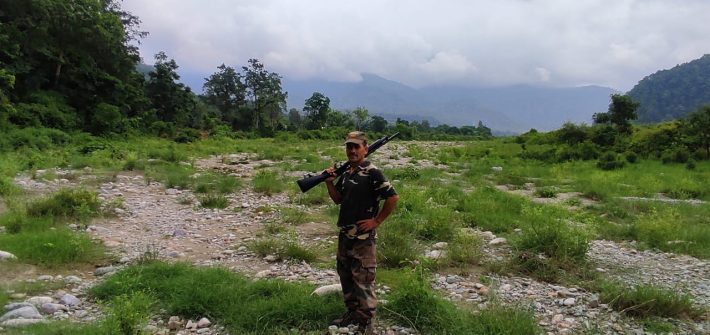
On the occasion of World Ranger’s Day, Jim’s Jungle Retreat salutes forest rangers who risk their lives to protect wildlifeProtecting wildlife is a risky job. Often our forest rangers have to face hostile field conditions, encounters with wild animals and ruthless poachers to ensure that they perform the duty of ensuring the safety of animals. […]
